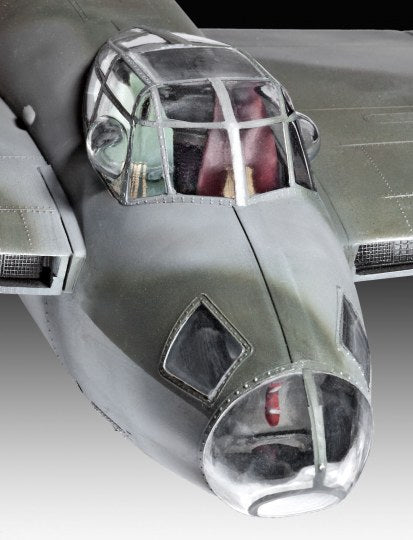The Mosquito was one of the RAF's most powerful and fastest bombers during World War 2 and was built in a total of 5,500 units until 1945. The lightweight aircraft owed its success to its special materials; instead of aluminum, wood was predominantly used for the basic structure and external coating. The prototype flew on November 25, 1940, after which the Wooden Wonder went into production. The Mosquito outflew all German fighter planes. When Reichsmarschall Göring was about to hold a parade in Berlin on Jan. 31, 1943, 3 Mosquito bombers dropped their load nearby and managed to escape quietly despite a huge fighter buildup. Production was increased during the war, and it was then used as a fighter and photo reconnaissance aircraft, including by the US Army Air Corps. Top speed was 611 km/h, range 3272 km. A maximum of 906 kg of bomb load could be carried.
- Historic Revell mold
- Textured surfaces
- Detailed cockpit with instrument panel
- A detailed RR Merlin engine
- Movable propellers
- Detailed landing gear
- Landing gear can be built either retracted or extended
- Detailed vertical stabilizer
- A removable engine side cowling
Decals for 2 RAF versions:
- DeHavilland Mosquito Mk.IV, NO. 627 Squadron, Royal Air Force, Woodhall Spa, England, June 1944
- DeHavilland Mosquito Mk.IV, No. 105 Squadron, Royal Air Force, Marham, England, December 1942
Scope of delivery:
Kit incl. building instructions and decal




